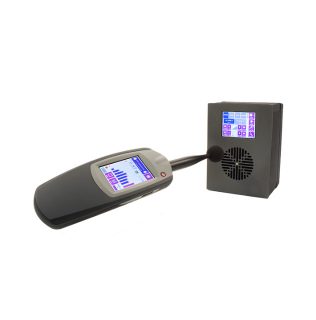How we do it
When working on a difficult project, acoustical consultants face a double challenge: solving the problem at hand is one of them, the other being how to effectively communicate the design and execution process to the client. Acousticians use words and ideas drawn from physics and engineering, but to the client and the general public these terms may be meaningless.

New technologies have become available that help in reducing this idiomatic gap. Visualization tools can help the client “see” how the sound is distributed in a space. But being able to listen to how a space will actually sound, even before it’s built, is a powerful tool that can empower the client at the time of taking decisions about their project. This process is called “auralization” and it’s accomplished with software.
Our AmbiNEAS laboratory hosts a 6-channel, 2D-Ambisonics auralization room with neutral acoustics (complying with the ITU-R BS.1116-1 Recommendation) equipped with Dynaudio BM5 loudspeakers. Complemented with a 2 by 1-meter video screen, this facility allows the client to both “see” and “listen” to their project, even before it was built.

Our 6-channel auralization room
Besides auralizations, Patagon Acoustics uses other computational techniques for solving difficult engineering problems, such as Finite Element Modeling (FEM) and Statistical Energy Analysis (SEA).







